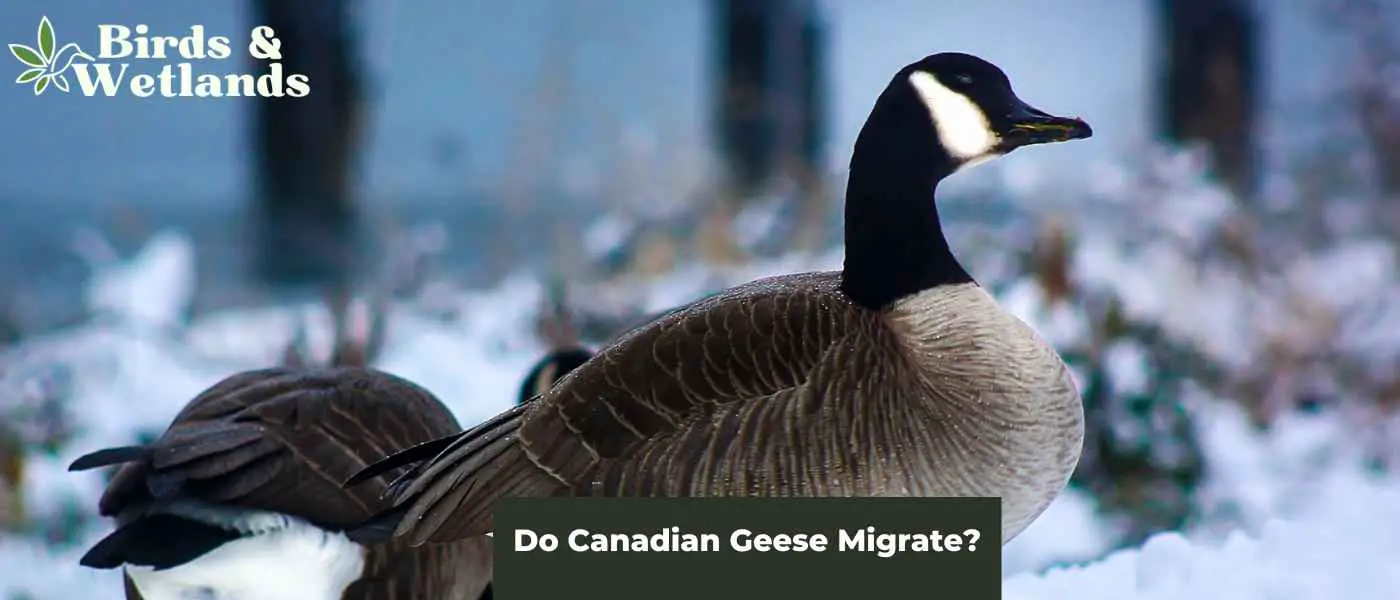Canada geese are a migratory species. This means they typically spend each year’s spring and summer months in the northern parts of the United States and Canada.
In the winter, many flocks of Canada geese migrate to warmer regions. These geese have strong homing instincts, meaning they navigate using various cues, including magnetic fields and landmarks. Their navigation methods make them highly efficient migrants, allowing them to travel long distances over short periods of time.
Key Takeaways on Canada Goose Migration
Canada geese migrate twice a year, once in the late summer or early fall to escape the cold and again in spring (September and October) to go back to their breeding sites.
Some Canada geese will fly all the way north to breed, while others will overwinter in southern US states.
Canada geese migrate south in the winter to find better food sources in mild climates.
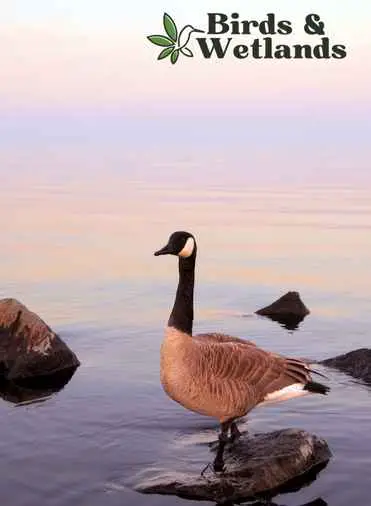
Why do some geese no longer migrate?
Geese are often considered iconic symbols of the changing seasons, migrating every fall to weather colder temperatures. However, in recent years there has been an increasing trend among Canada geese to stay put during their breeding season rather than migrate. This phenomenon is caused by several different factors, including environmental changes and the diminishing strength of instinctual migratory memories.
One major factor contributing to some geese’s lack of seasonal migration is the warming climate. With fewer intense winter storms, many geese no longer need to leave their summer habitats to find suitable places to spend the winter.
They remain where they are and wait for warmer days to arrive, sheltered from harsh winds and heavy snowfall by tall trees or nearby bodies of water. Additionally, geese migration overall is becoming shorter. Canada geese have been a common sight in many city parks, golf courses and private lakes.
In addition to environmental factors, some geese may no longer have a natural urge to migrate due to genetic changes. Through centuries of breeding with both resident and migratory populations, certain genes have become dominant among urban geese while others have withered away.
Most geese that live in the cities and near urban areas haven’t developed the same instinctual drive as their ancestors did, making it less urgent for them to move on when drops in temperature signal that it’s time for a change. Because they no longer feel a strong internal compulsion to migrate, these geese may never leave their homes behind and stay in one place year-round.
Why do migrating Canada geese fly in the wrong direction?
The crest, back, and wing feathers of Canada geese are grey or brown, with a white or grey underbelly. Each year, hundreds of thousands of these birds make long journeys to wintering grounds and non-breeding sites, often traveling thousands of miles between their summer and winter homes.
Despite their seeming familiarity with the skies, many people have wondered why these geese appear to fly in the wrong direction. In reality, there is no wrong direction for Canada geese. They know exactly which way is south and will always choose that direction when heading out on their migrations.
Some people have suggested that unusual factors, such as wind or weather conditions, might cause migratory geese to fly in the wrong direction.
However, these birds are very adept at finding the best flight paths, even if those paths might sometimes seem counterintuitive from a human perspective. In fact, much like a GPS device in a car, Canada geese likely navigate using some combination of light exposure, star patterns, and other internal cues that we don’t fully understand yet.
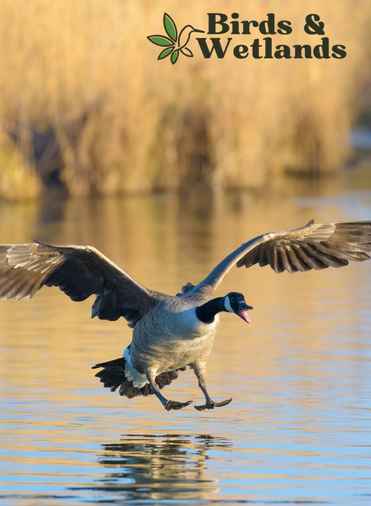
Do Canada geese migrate with other birds?
Canada geese are migratory birds known for their spectacular migratory journeys, typically flying hundreds or thousands of miles yearly in large groups, usually seen in a V formation. These large flocks can sometimes comprise tens of thousands of birds, making them an incredible sight to behold while taking advantage of a strong tailwind.
Unfortunately, however, many people assume that Canada geese migrate with other species of geese. In fact, this is often not the case. Canada geese mate for life and while some geese travel with other migrating bird species occasionally, they commonly migrate in family groups. This behavior is likely because Canada geese are very territorial and choose only those individuals who are related to them as part of their flock.
That said, while individual Canada geese may not follow other groups on migration, they do often settle down in the same wintering grounds as other birds such as the cackling goose, Ross’s goose and snow geese. So while they do not fly together during migration, they may rest and feed side-by-side once they reach their destination.
How do young geese learn to migrate?
When young geese are old enough to fly, they begin their first migration with the help of their parents. These older geese show the fledglings the route, pointing out key landmarks and communicating important flight patterns and direction changes.
They also provide protection during flight, watching over and guiding their young as they follow in their footsteps.
In addition to this guidance, fledglings also learn about migration by observing other experienced migrant birds around them.
By imitating clues, the fledglings develop strong memories of the migration route and can navigate it successfully on their own each year. And once these fledglings learn how to fly, they can join the whole family in their annual migration.

How do geese know how to fly south for the winter?
At first glance, it may seem that geese have some innate knowledge about flying south for the winter. How could such large birds take to the sky without getting lost or getting into trouble? In reality, geese navigate using a complex network of information and instinctual behaviors.
One important technique used by geese to find their way is the use of landmarks. As they fly over rivers, coastlines, and mountain ranges, they create mental maps based on these physical features.
Additionally, they may consult their internal compass to help determine their current position in relation to these navigational landmarks. On clear nights, geese may also look up at the stars and use these bright sources of light as markers as well.
In addition to these techniques based on experience and observation, geese also have an innate ability to sense Earth’s magnetic field. Geese can essentially sense north and south by detecting subtle magnetic variations in the Earth’s field lines.
Combined with other navigational tools and abilities, this physical compass allows geese to travel far from their original homes each year without feeling disoriented or confused along the way.
When do geese tend to be more aggressive?
As anyone who has ever encountered a flock of geese knows, these large, gregarious birds are universally known for their aggressive behavior.
Parent geese can be notoriously territorial and protective, and their tendency to attack is most apparent during the spring nesting season. This is when they are at their most vulnerable as they care for their goslings, which have not yet developed the ability to fly.
During this time, geese will aggressively defend their nests and often chase away any perceived threat – human or otherwise – to protect their goslings.
As such, it is advisable to steer clear of nesting geese during the spring season if possible, or at the very least to exercise caution around these potentially aggressive creatures. A female goose is just as fierce and aggressive as a male goose.
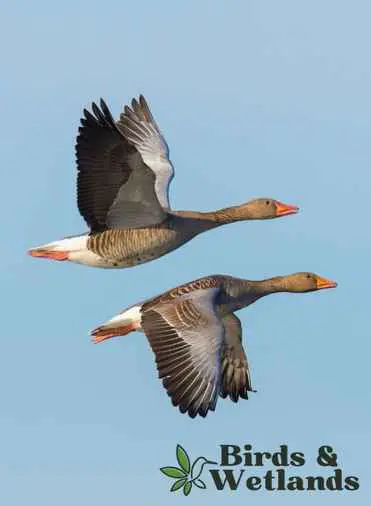
Where in North America do Canada geese spend their winters?
The vast majority of North America’s Canada geese head to the temperate climates of the south and spend the winter months in coastal areas to the south. These regions, which include major cities like New York, Los Angeles, and San Francisco, offer warm temperatures and plentiful food sources.
In addition to being comfortable and well-fed, Canada geese can also find safe places to roost at night. Coastal wetlands and estuaries provide essential shelter for these birds during their migration, as they often rest along these well-vegetated habitats.
While some individual Canada geese may choose to spend the winter further inland or closer to the coast depending on factors such as weather conditions and availability of food sources, most seem quite content spending their winters in the southern United States or Mexico.
Do snow geese migrate?
Yes, the snow goose migrates. These birds nest in the Arctic tundra during the summer months and then head south in the fall to warmer climes in the Southern US and Mexico, following the snow line as they go.
While on their migration route, they often stop at lakes and wetlands where they can feed on the plentiful plant life. This ensures that they can keep going on their long journey and sustain their energy levels during their flight.
Additionally, the Central Flyway, one of several major pathways used by migrating geese, is an ideal route for snow geese due to its favorable climate and diversity of food sources along the way.
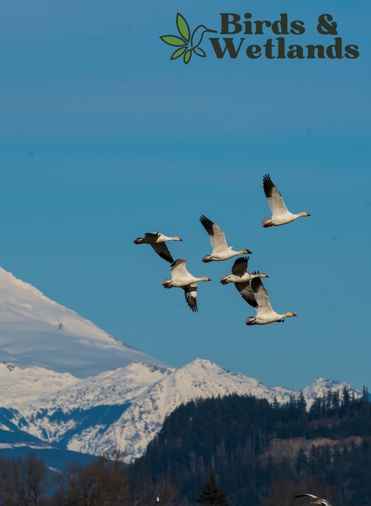
Do greylag geese migrate?
Yes, greylag geese do migrate. These large waterfowl generally form flocks of up to 100 individuals and migrate south in the fall as part of a larger flock. During the winter months, they migrate to semi-aquatic habitats like estuaries and marshes, where they can feed on grasses and other types of vegetation.
Additionally, they often consume agricultural crops during this time, further contributing to their impact on the local environment.
How did climate change affect bird migration?
Climate changes have had a significant impact on bird migration in recent years. One of the most noticeable effects has been on migratory routes, which have shifted as conditions in different parts of the world have changed.
In some cases, these birds tend to adjust to these new migration routes with relative ease, using established migration patterns or following other migratory species.
However, in other cases, migration flights seem to be affected by erratic and unpredictable weather patterns, leading to confusion and stranding among migrating flocks.
Additionally, changes in air and water temperatures can also cause problems for these birds during flight, resulting in dehydration and exhaustion
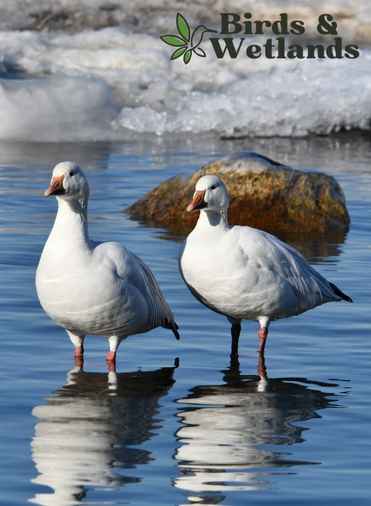
Where do Canada geese usually breed?
Canada geese generally breed in northern Alaska and the sub-arctic regions of northern Canada. However, some populations also breed in southern areas like British Columbia. These birds are highly social and tend to flock together in large groups to protect their goslings from their natural predators.
In order to sustain these bustling breeding grounds, Canada geese need plenty of open space with good access to food, water, and shelter. Fortunately, vast stretches of undeveloped land across Canada offer ideal habitats for birds like the Canada goose.

